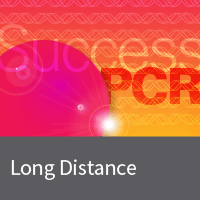When Epstein-Barr virus becomes a chronic menace: chronic active EBV and lymphoma
The source of more than just the kissing disease
Whether we know it or not, most of us have encountered Epstein-Barr virus (EBV) at some point in our life given that EBV is estimated to infect >95% of the population worldwide, typically through the spread of saliva. Most commonly, EBV infection will occur in childhood without the presentation of symptoms or will lead to infectious mononucleosis before going dormant for the remainder of our lives. However, in some rare cases, the virus can remain active, causing chronic active EBV or CAEBV (National Center for Immunization and Respiratory Diseases 2018; Genetic and Rare Diseases Information Center 2017). EBV is also an oncogenic herpesvirus, which preferentially infects B cells but also in a less frequent manner T and NK cells, causing Hodgkin's lymphoma, Burkitt's lymphoma, epithelial carcinomas, and other malignancies when infecting patients chronically (Kanda, Yajima, and Ikuta 2019; Cohen et al. 2009).

Recently, researchers from several Japanese universities carried out a collaborative investigation of the origins of CAEBV and the genomic mutations that lead to the development of tumors and lymphomas (Okuno et al. 2019). Using high-fidelity PrimeSTAR GXL polymerase along with Sanger and deep sequencing, the researchers probed for intragenic deletions in the EBV genomes of patients with different CAEBV-associated lymphomas. They identified deletions in microRNA clusters and viral particle production genes which could be linked to the malignancies.
Getting to the root of EBV-associated lymphomas
Okuno et al. used a variety of sequencing methods to examine the mutational landscape and clonal evolution of CAEBV (Figures 1 and 2 in the paper). Whole-exome sequencing of T, B, and NK cells from CAEBV patients revealed an average of 5 mutations per sample (16 samples were obtained from 10 patients) and a total of 192 non-synonymous somatic mutations across all the samples. Further whole genome sequencing analysis of samples from patients with identical driver mutations in cells of different lineages led researchers to the conclusion that CAEBV begins with the infection of a common ancestor of the various lymphoid cells.
Using a target enrichment strategy for resequencing, the researchers identified intragenic deletions in the EBV genomes of 35% of the CAEBV patients overall, and in 50% of the CAEBV patients that exhibited abnormal tissue growths. In contrast, no EBV genomic deletions were found in patients exhibiting infectious mononucleosis.
The researchers aimed to confirm these results by performing Sanger and deep sequencing on amplicons from targeted regions of the EBV genome. Due to the uncertainty of the deletion sizes, probing for this type of genetic variation is typically performed with long-range PCR and requires a high-fidelity polymerase that can accurately and reliably amplify genomic regions both small and large. Furthermore, the chosen polymerase needs to be capable of tackling the challenging repetitive regions present in the EBV genome, such as deletion breakpoints. PrimeSTAR GXL polymerase, which was specially designed for reliable amplification of long, GC-rich, or AT-rich sequences, was used for the generation of amplicons.
Careful analysis of the deletions revealed that they were most commonly found in two microRNA clusters that regulate the switch from latent infection to reactivation through a lytic-cycle cascade. In other studies, deletions in these microRNA clusters have been shown to lead to lymphomagenesis (Lin et al. 2015). Using a xenograft model, the researchers confirmed the pathogenic link between the deletion of the gene BALF5 and lymphomagenesis.
The right tool for the job
Next-generation sequencing has revolutionized our understanding of the genetic elements of viral pathogenesis. PCR, however, is still a critical workhorse for helping verify the pathogenic mutations, insertions, and deletions observed with NGS, so having a reliable, robust polymerase on hand is essential. For this study, the researchers were challenged with validating intragenic deletions that ranged in length from 73–49,847 base pairs. Being optimized to excel with long amplicons and challenging genomic templates, PrimeSTAR GXL was more than up to the task. Browse our PCR application guide to see how PrimeSTAR GXL and our other polymerases can help with your most challenging PCR projects.
References
Cohen, J. I., Kimura, H., Nakamura, S., Ko, Y.-H. & Jaffe, E. S. Epstein-Barr virus-associated lymphoproliferative disease in non-immunocompromised hosts: a status report and summary of an international meeting, 8–9 September 2008. Ann. Oncol. 20, 1472–1482 (2009).
Genetic and Rare Diseases Information Center. Chronic active Epstein-Barr virus infection. NIH Natl. Cent. Adv. Transl. Sci. (2017). at <https://rarediseases.info.nih.gov/diseases/9534/chronic-active-epstein-barr-virus-infection>
Kanda, T., Yajima, M. & Ikuta, K. Epstein‐Barr virus strain variation and cancer. Cancer Sci. 110, 1132–1139 (2019).
Lin, X. et al. The Epstein-Barr virus BART miRNAcluster of the M81 strain modulates multiple functions in primary B cells. PLOS Pathog. 11, e1005344 (2015).
National Center for Immunization and Respiratory Diseases. About infectious mononucleosis. CDC (2018). at <https://www.cdc.gov/epstein-barr/about-mono.html>
Okuno, Y. et al. Defective Epstein-Barr virus in chronic active infection and haematological malignancy. Nat. Microbiol. 4, 404–413 (2019).
Tech note
Long PCR for cost-effective and efficient targeted next-gen sequencing.
Long-range PCR with PrimeStar GXL DNA Polymerase was used to amplify the entire BRCA1 and BRCA2 genes for targeted next-gen sequencing.
Takara Bio USA, Inc.
United States/Canada: +1.800.662.2566 • Asia Pacific: +1.650.919.7300 • Europe: +33.(0)1.3904.6880 • Japan: +81.(0)77.565.6999
FOR RESEARCH USE ONLY. NOT FOR USE IN DIAGNOSTIC PROCEDURES. © 2025 Takara Bio Inc. All Rights Reserved. All trademarks are the property of Takara Bio Inc. or its affiliate(s) in the U.S. and/or other countries or their respective owners. Certain trademarks may not be registered in all jurisdictions. Additional product, intellectual property, and restricted use information is available at takarabio.com.





